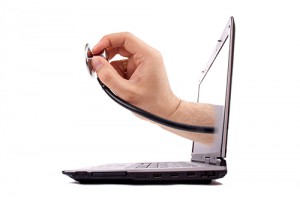 I have blogged in the past on the Internet of Things (IoT) and also on health and technology. Today’s post is about the intersection of those two areas. It is about how the Internet of Things can keep us potentially safe and healthy.
I have blogged in the past on the Internet of Things (IoT) and also on health and technology. Today’s post is about the intersection of those two areas. It is about how the Internet of Things can keep us potentially safe and healthy.
Tracking Your Health
With the introduction of the Apple Watch yesterday, Apple also introduced ResearchKit, a follow on to HealthKit that was introduced last year. This allows you to participate in research studies through your iPhone. Hardware on the iPhone such as voice recorders or motion sensors can help you track steps taken or voice patterns that may detect the onset of Parkinson’s disease. This data can then be shared, with your permission, with researchers so they get a much larger global sampling for their studies. Of course, the data is also available to you as well so that you can monitor and be an advocate for your own health. Perhaps, you are not getting as much exercise as you need or perhaps there are early warning signs of a chronic disease that you need to pay attention to. It would be great to have a device that would detect the early signs of a stroke and alert you and others to the possibility—early detection and intervention is critical in this case.
Smart Health
In a recent article by Jane Sarasohn-Kahn, she highlights some devices in the intersection of Internet of Things and health monitoring. Among the devices she mentions are these:
- Scales that monitor not only your weight but also your body composition. This is a great way to closely track your health day to day and over a long period.
- Beds that monitor your heart rate, respiration rate, motion, and “bed presence” or how long you have been in bed can help you track your health through nonintrusive means. These measures can give you early warning signs of health issues.
- Toilets that can monitor your weight, BMI, blood pressure, and blood sugar levels. This is important to help you understand when you are becoming pre-diabetic and need to change your diet or exercise routine.
- Motion monitors such as FitBit or the new Apple Watch which remind us through a chime or haptic feedback when we have been sitting too long or have not completed our 10,000 steps for the day yet.
- Smart lamps designed to change light intensity depending on the time of day and also monitor your sleep (or lack thereof) and remind you when it is time to retire by a friendly blink. These are connected to your home network and can be controlled through your smartphone.
Thoughts
Where some see opportunity and peace of mind, others see intrusiveness and privacy issues. We can now monitor very detailed health information and share that with our doctor or in the case of ResearchKit, researchers trying to develop a breakthrough to eradicate, or at least control common health issues. A blessing for some, a potential health information breach for others. I think that, by combining health monitoring and the Internet of Things, we can enjoy unobtrusive devices that let us be in charge of our own wellness and health. Let me know what you think. Do you use health monitoring devices? Do they work for you? I look forward to hearing about your experiences.
Kelly Brown is an IT professional and assistant professor of practice for the UO Applied Information Management Master’s Degree Program. He writes about IT and business topics that keep him up at night.



Kelly, thanks so much for citing my work on the Internet of Things and health care. The possibilities and benefits will be positive, keeping in mind some of the challenges and concerns, like privacy, consumer control on one’s “digital persona,” and being able to opt-in and opt-out on a granular basis. Stay well! JSK